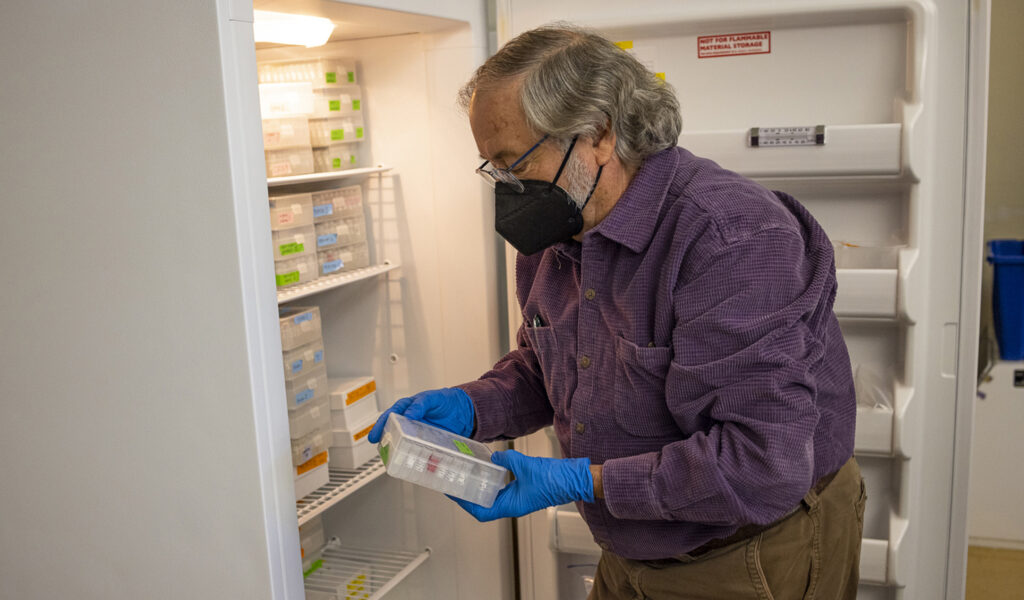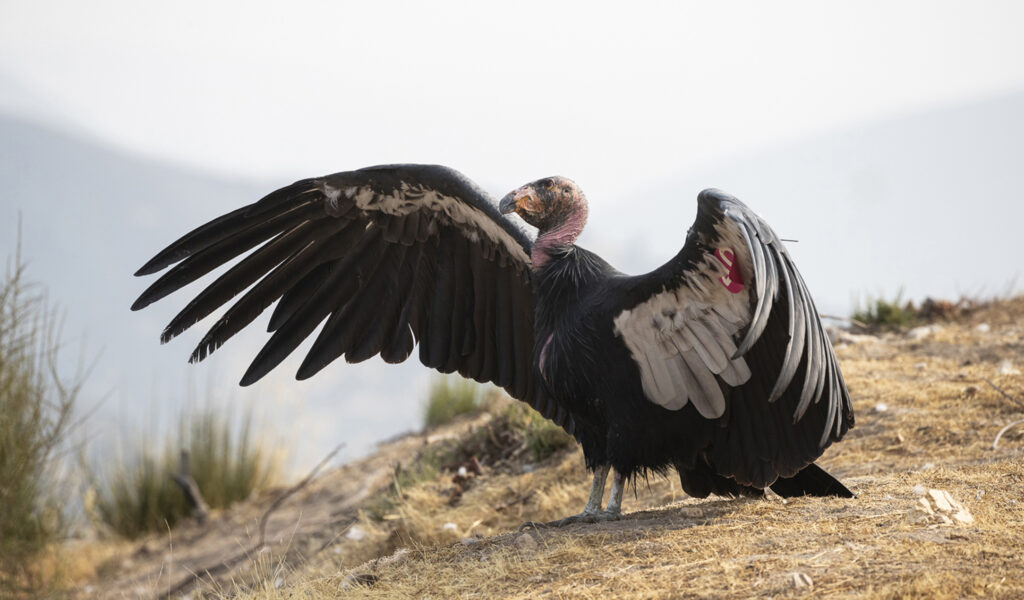
Oliver Ryder, Ph.D., is the Kleberg Endowed Director of Conservation Genetics at San Diego Zoo Wildlife Alliance. He oversees research activities in the areas of molecular genetics, genomic studies, and genetic rescue efforts.
Many times, I have reflected about the remarkable wealth of data on the history and recovery of the California condor we have at hand because of the samples collected for genetic analysis beginning in the 1980s. I wonder if there is any species for which we have a richer genetic record. Samples of DNA from nearly 1,000 condors—representing more than 98 percent of the individuals in the pedigree—have provided a tool for management of the Recovery Program breeding and for assessment of condor behavior and management in wild populations.
On the several occasions that I have seen California condors flying in the wild, the thrill and exaltation are reinforced by the arcane knowledge that our team identified the sex of this bird and that we have a genetic profile of its parents and, if it ever reproduced, all its offspring. Genealogies are important to human cultures from the dawn of recorded time. So, it seems to me that we would quite naturally seek to understand the record of relationships revealed in a pedigree.

It’s just so unusual to have such a record for this species—in part because it is so powerful, but in part because the California condor came so close to extinction. The past and future of the gene pool is revealed through the samples we have collected and banked and the information we derive from them. And, because of its importance, I feel it is something we should feel obligated to document and use for the benefit of the species. I have the confidence that it will be useful years, decades, and possibly centuries from now. With the capacity for this frame of reference, in the study just published in the American Genetic Association’s Journal of Heredity, genetic profiles of 911 condors (about 98 percent of all condors in the studbook) provided an overview of the growth of the population and its pedigree.

Many features could be noted from this work, which was actually the subject of another publication earlier this year (Moran, et al., 2021). However, the data for two condor chicks—studbook number 260 (SB260) and SB517—stood out like sore thumbs. The genetic profiles of these chicks —which hatched in different years and in different locations—were inconsistent with those of the presumed fathers (the only males with whom the females were housed). In fact, the DNA told a different story: the males were not the fathers.
The results were checked and confirmed. Both chicks could be confirmed as offspring of the female. They each were different from their mother, as expected in a female bird passing genetic information to an egg, but all the genetic information in each chick was a duplicated copy of maternal loci. We say the chicks were homozygous at all loci—a startlingly improbable occurrence. And, since both chicks were male, all evidence pointed to parthenogenesis.
There was no male contribution to the genetic makeup of the chicks. Both females previously had chicks sired by the male with which they were housed, and then inexplicably, they produced chicks by parthenogenesis. We cannot say why, but we can say that it happened. We can watch for additional parthenotes each time we confirm parentage of California condor chicks. The potential role of parthenogenesis in California condor or any bird species is a story yet to unfold. But now, we know it happens.
Side Note: Why Are Bird Parthenotes Always Male?
As you might (not) remember from biology classes, sex determination in humans depends on our 23rd chromosome, which has two variants: “X” and “Y.” Human females carry two copies of the X chromosome. Human males carry a copy of the X chromosome, too, but also a copy of a Y chromosome. To massively oversimplify things, that Y makes them male. But this entire scenario doesn’t apply to birds.
In birds, sex determination relies on completely different chromosomes, called “Z” and “W.” Female birds carry one of each. Male birds carry two Z chromosomes. So for birds, a W makes an embryo female. But having at least one Z chromosome is important, because a Z is necessary for an egg to develop.
So when a female bird produces an egg, it will have either a Z or a W chromosome. During fertilization, that Z or W from mom always combine with a Z from dad—that’s the only kind of sex chromosome he has. Male embryos result from a ZZ combination, and female embryos result from a ZW combination. In the case of parthenogenic reproduction, a hypothetical embryo that gets a W from its mother never develops, because it never combines with any contribution from a male (Z). An individual that gets a Z from its mother, on the other hand, somehow (and this part is a bit mysterious) produces a second copy of a Z chromosome. The result is that in birds, parthenotes are always male.




